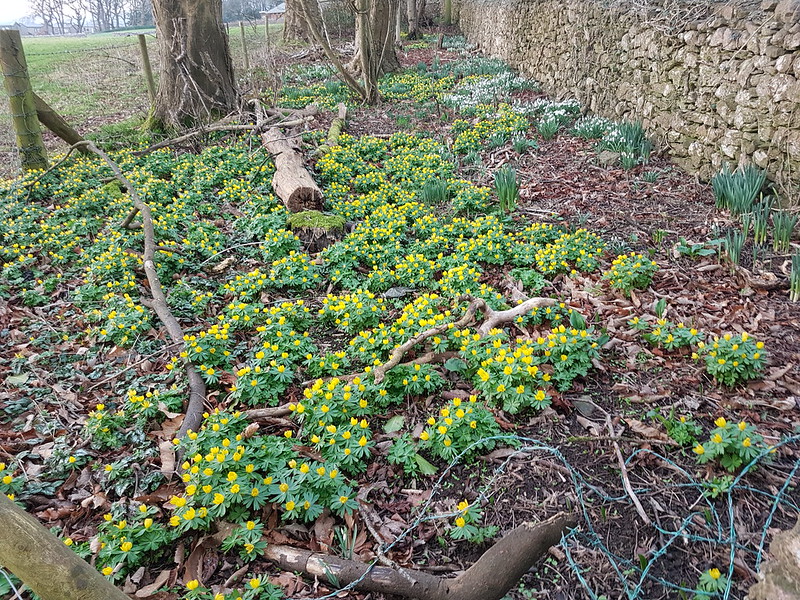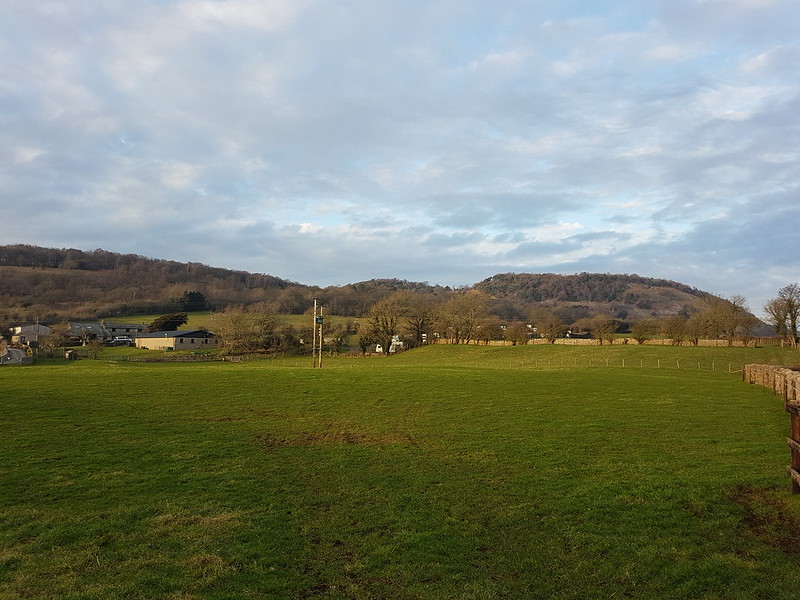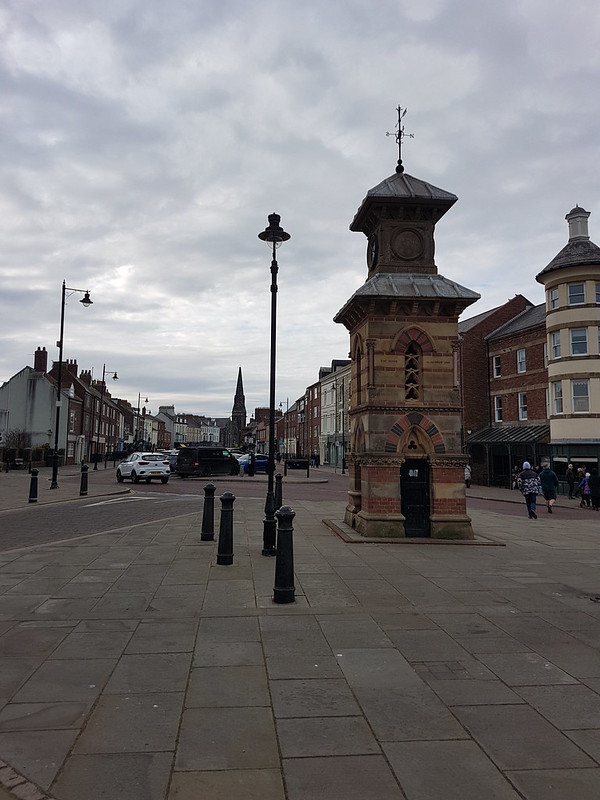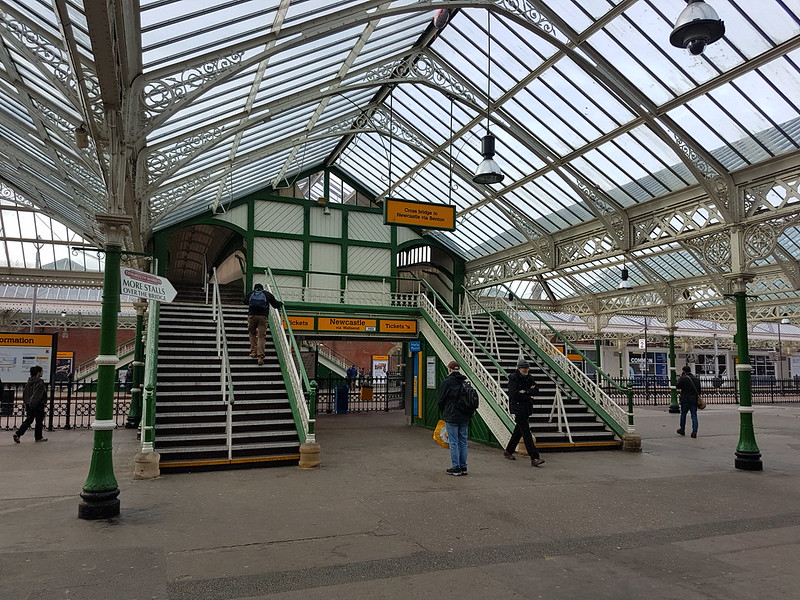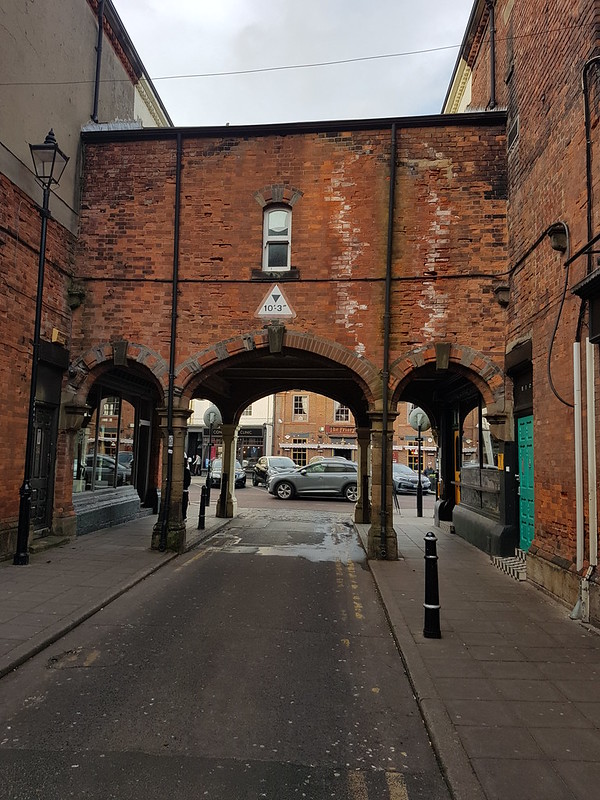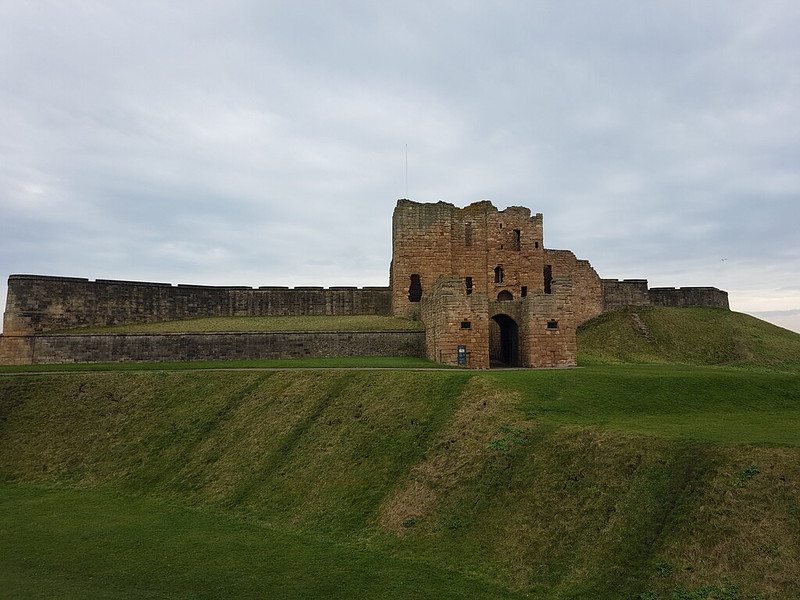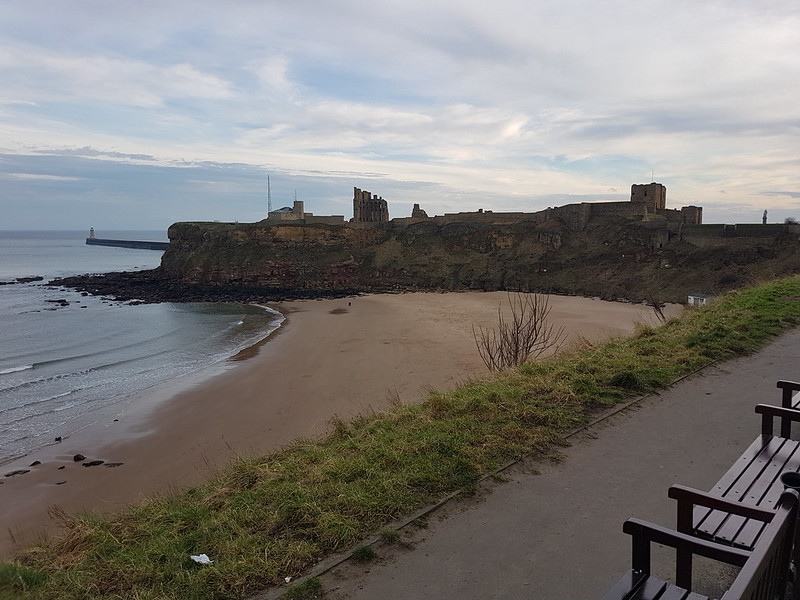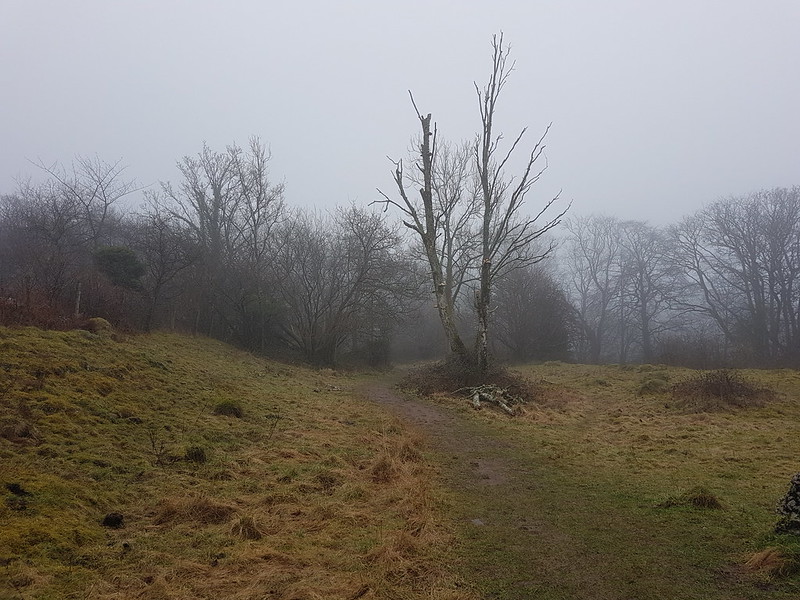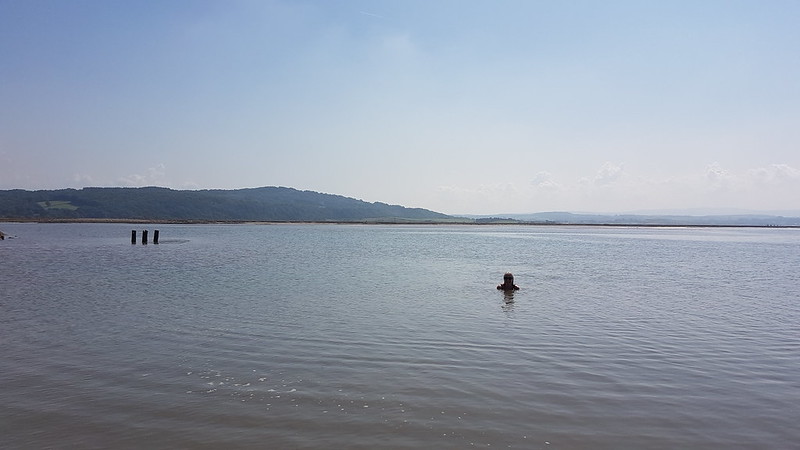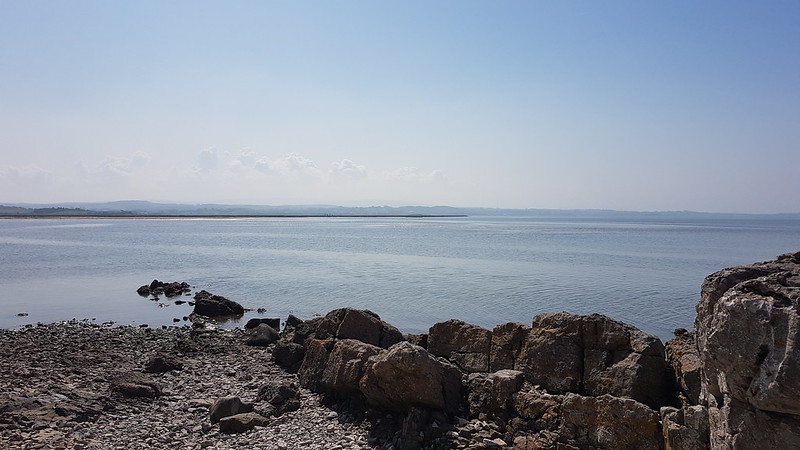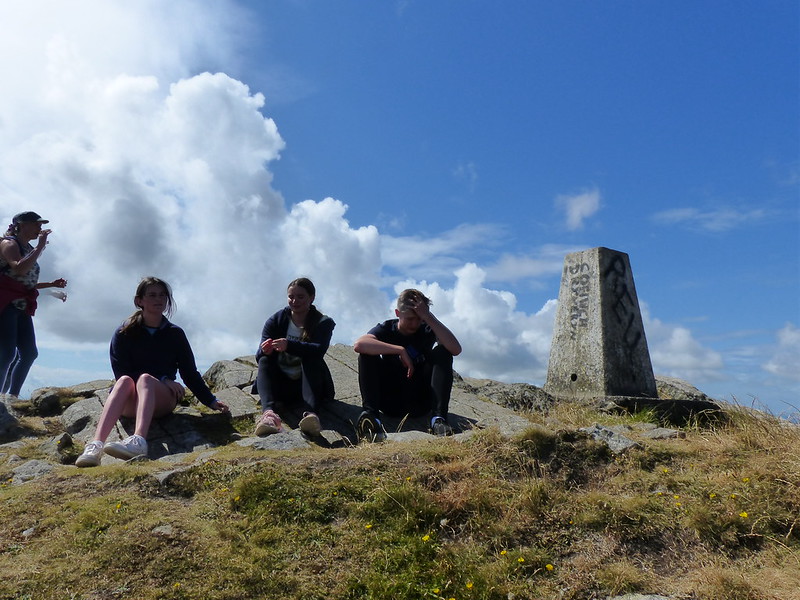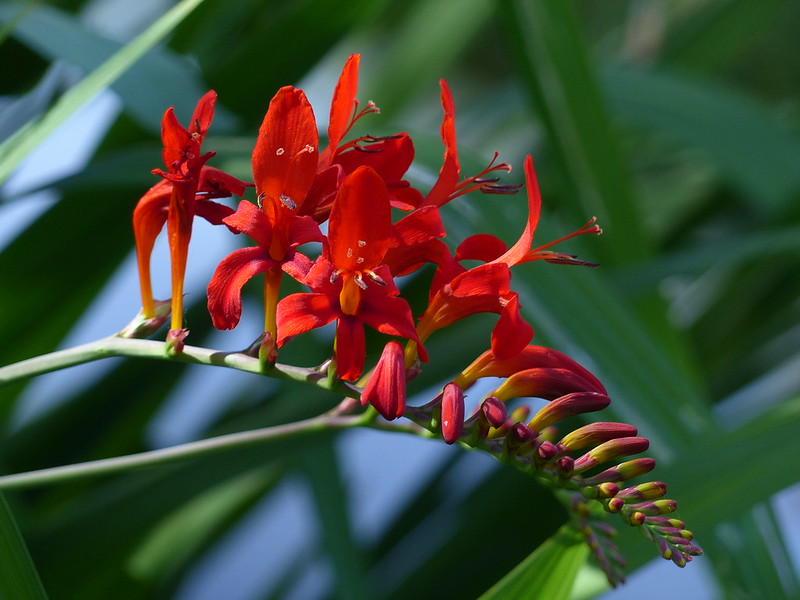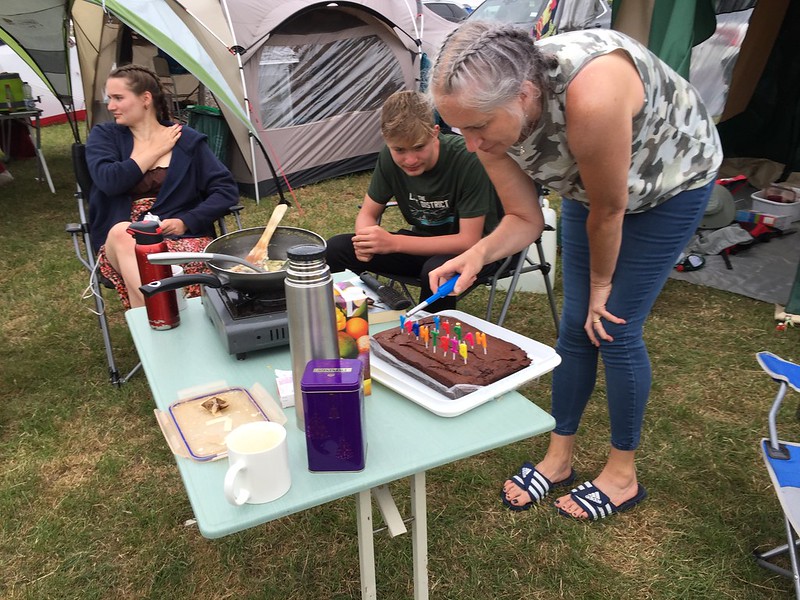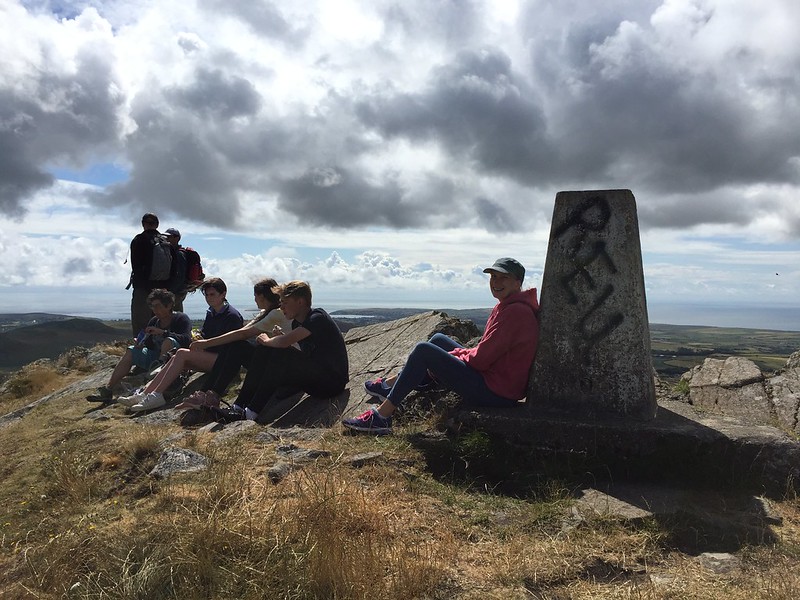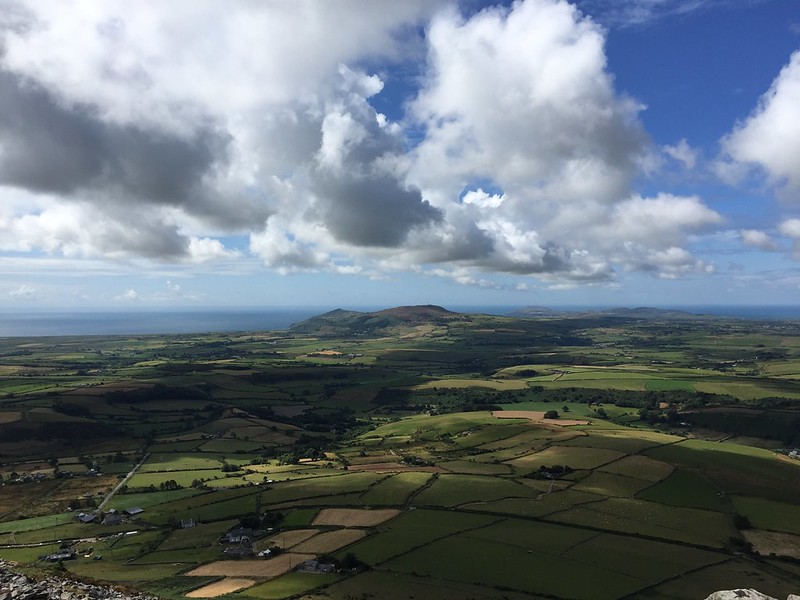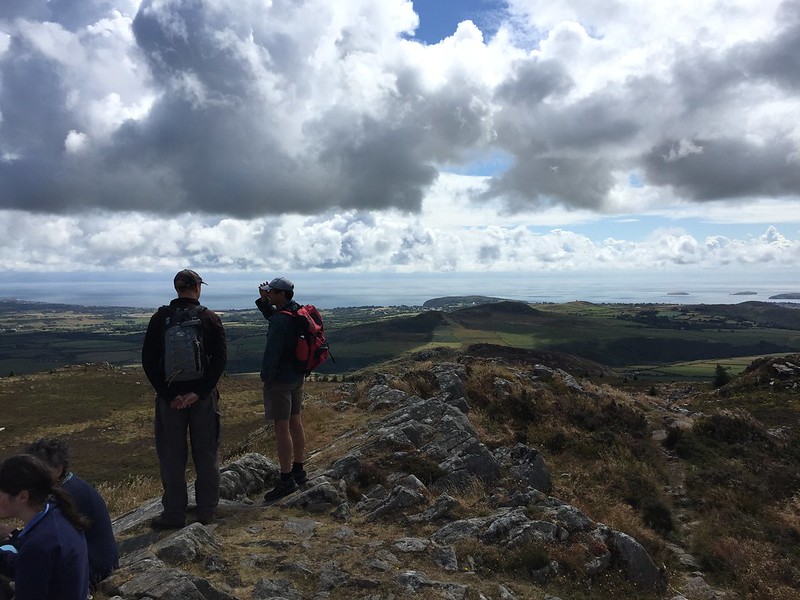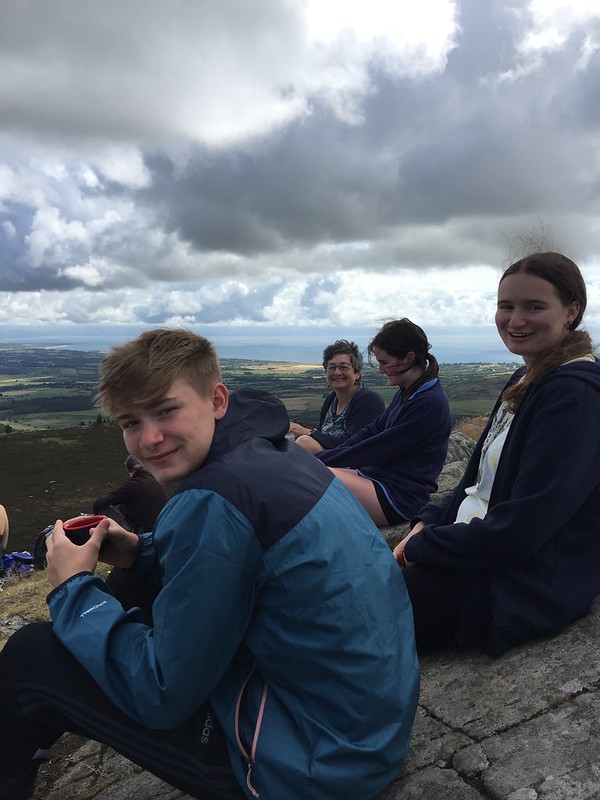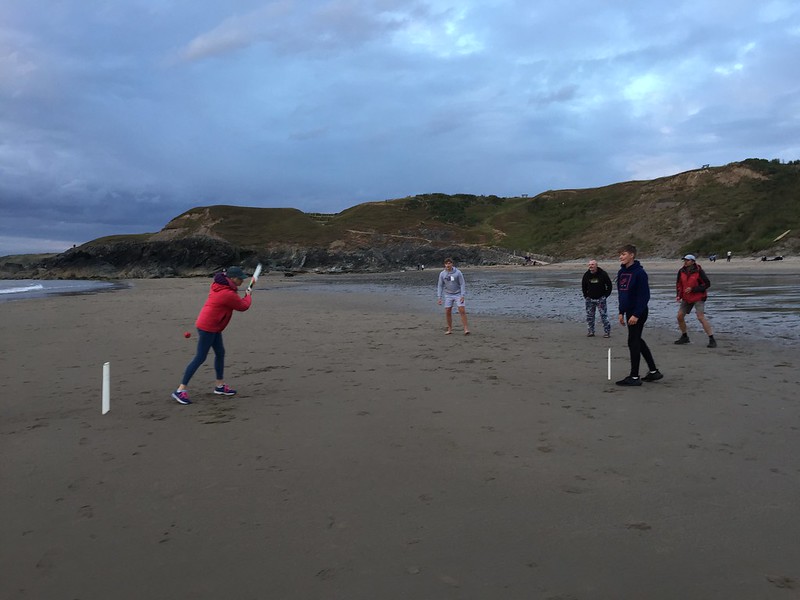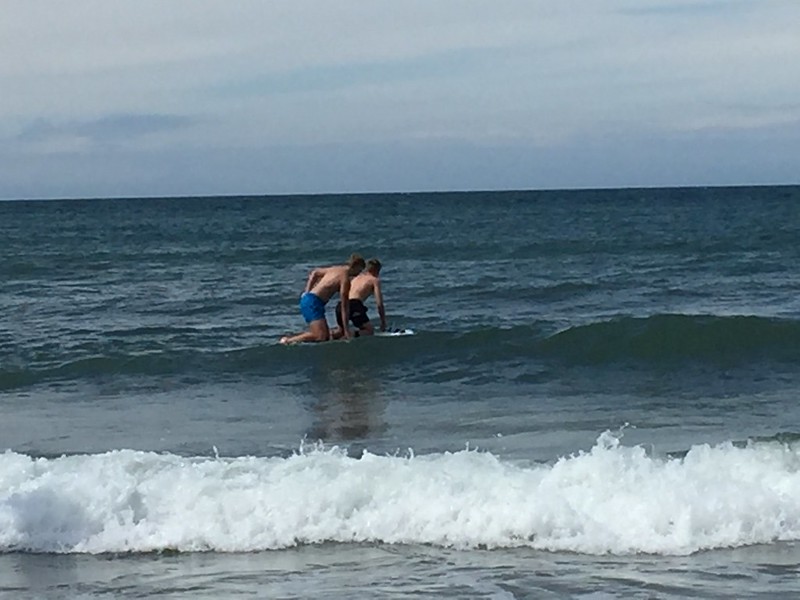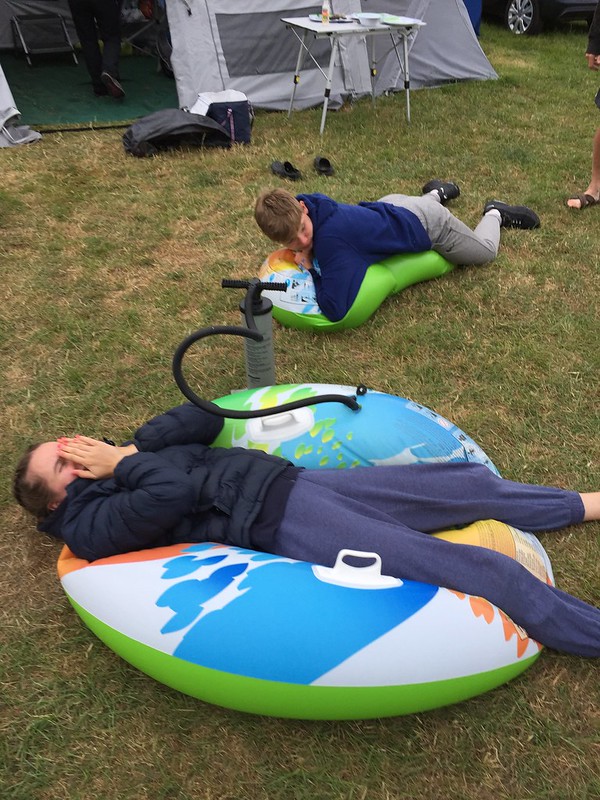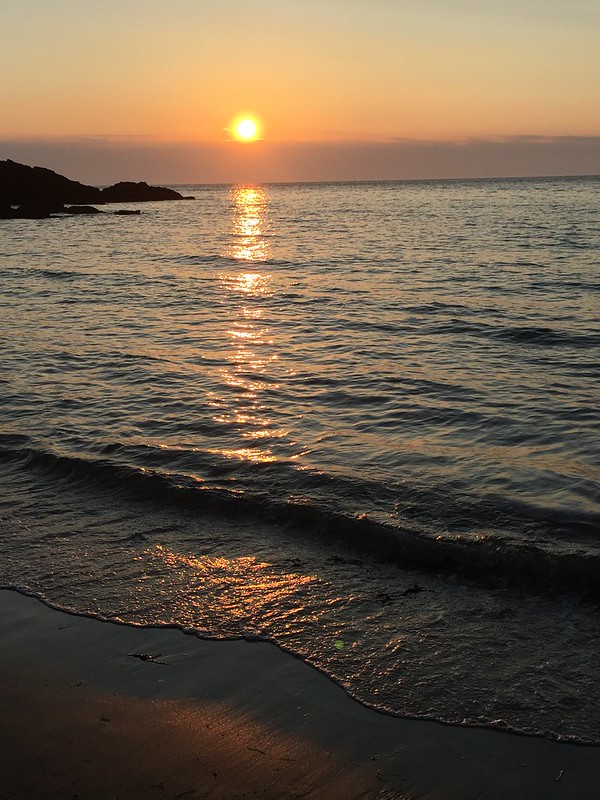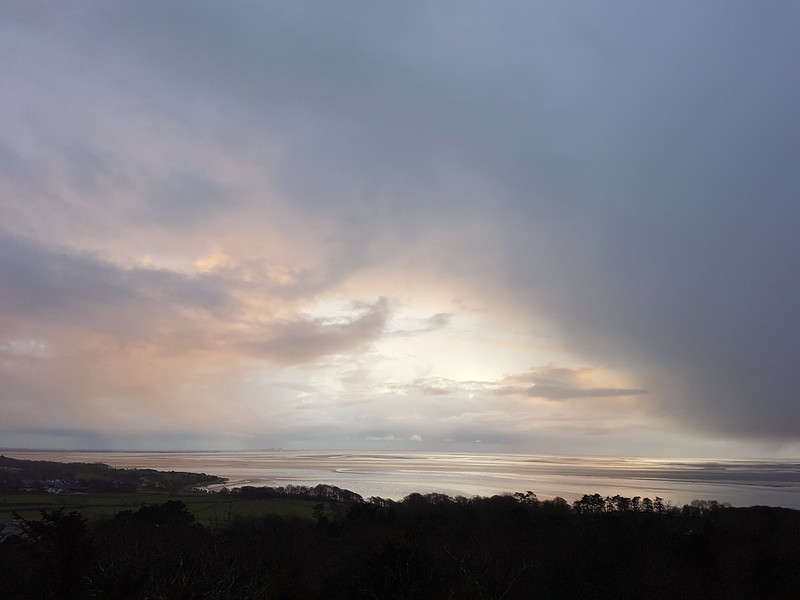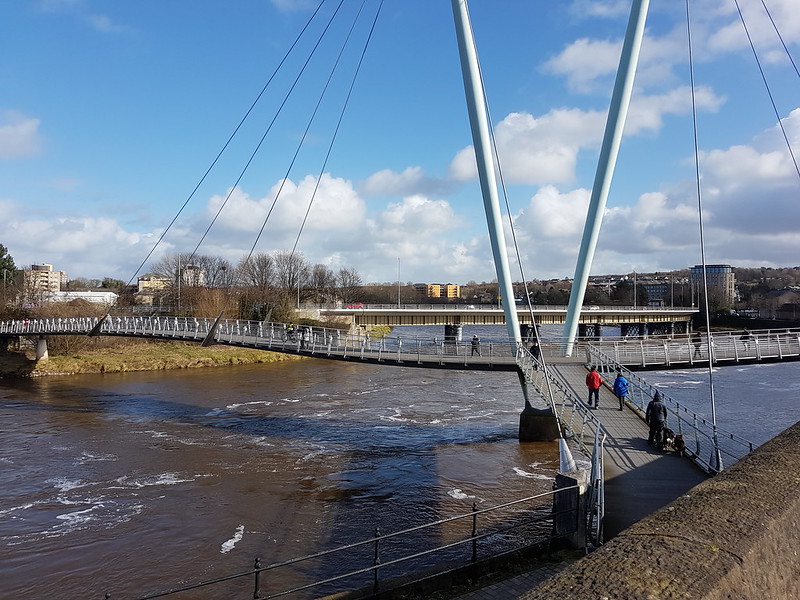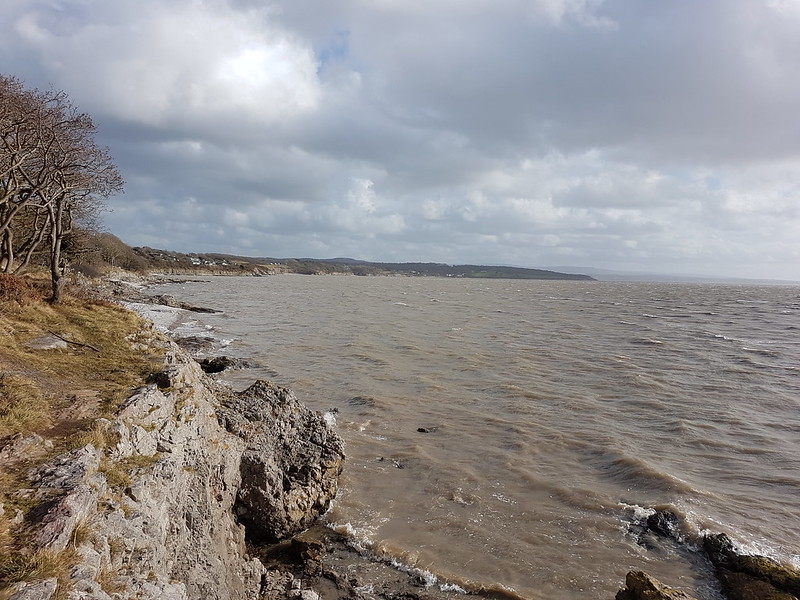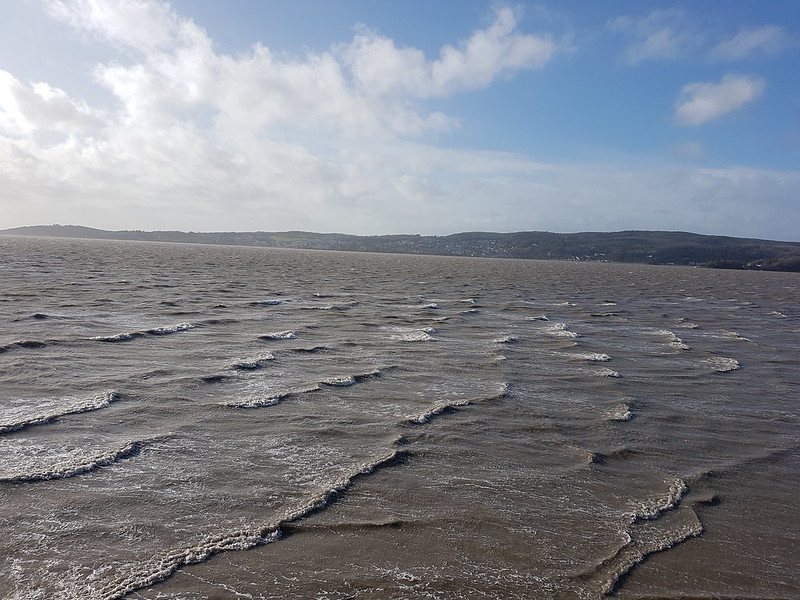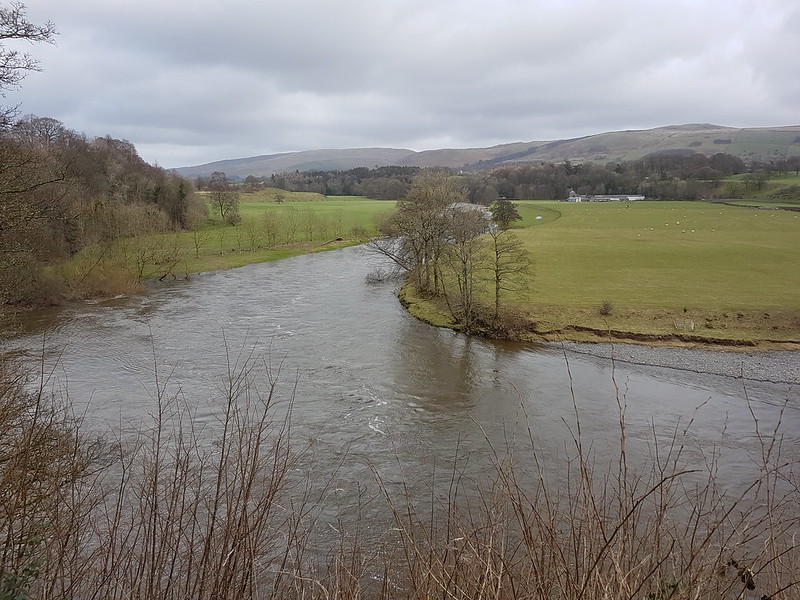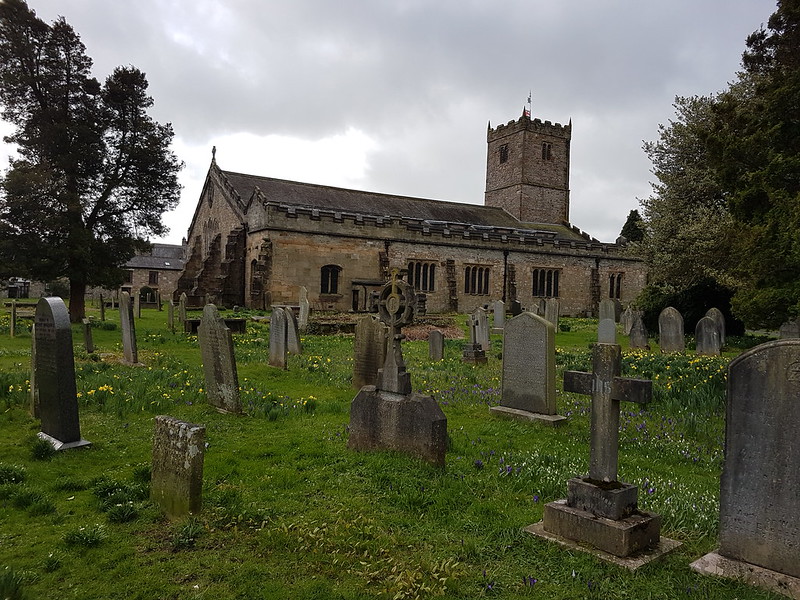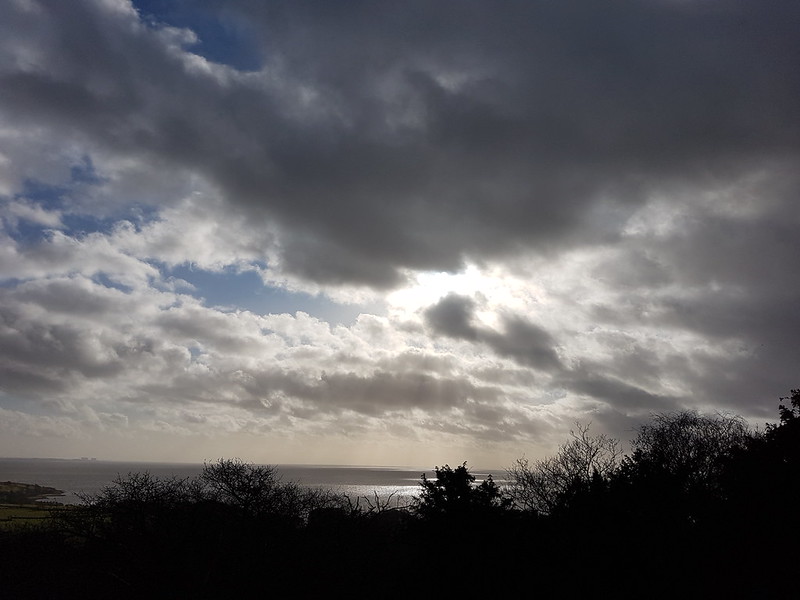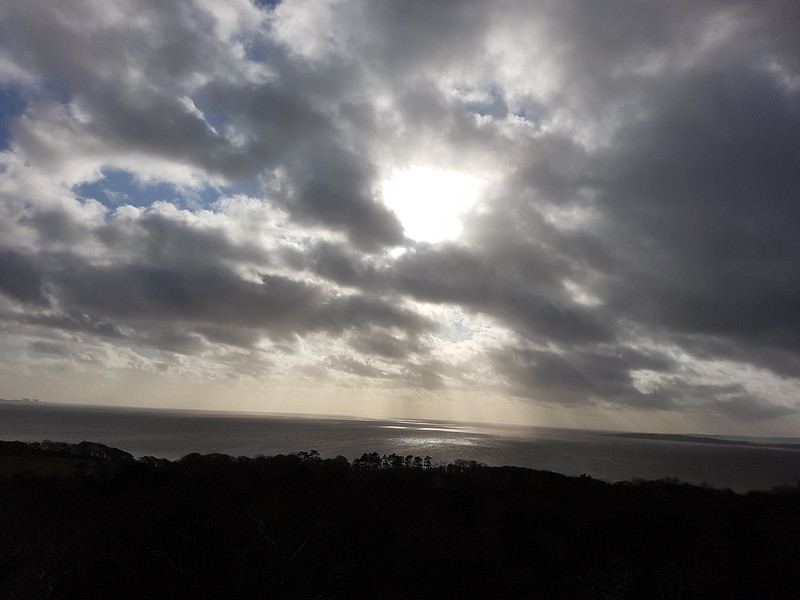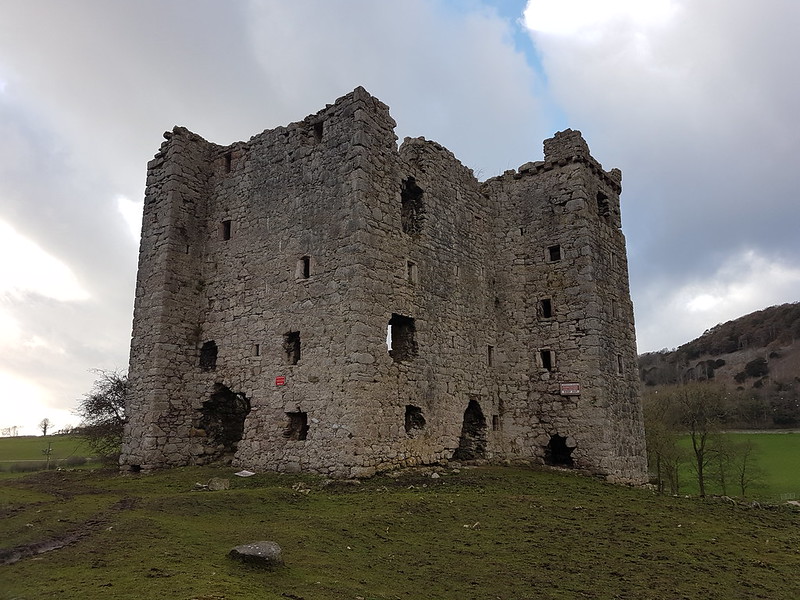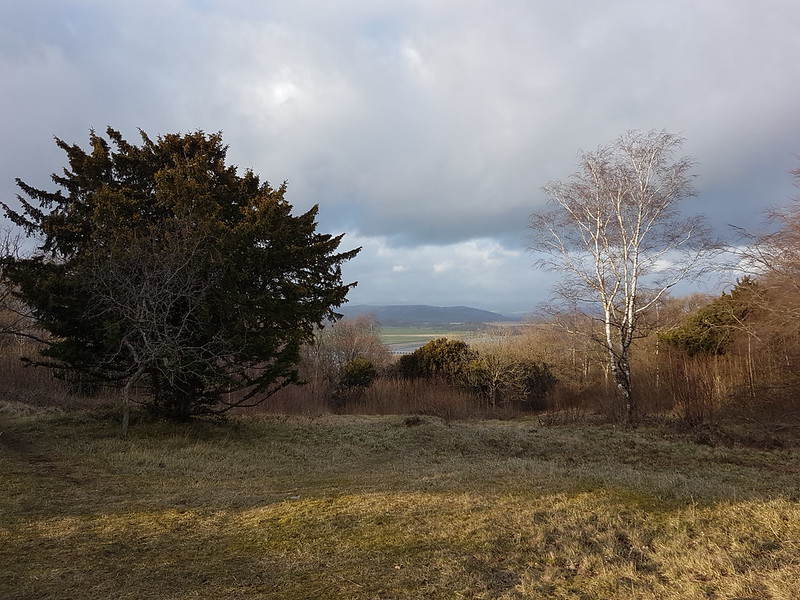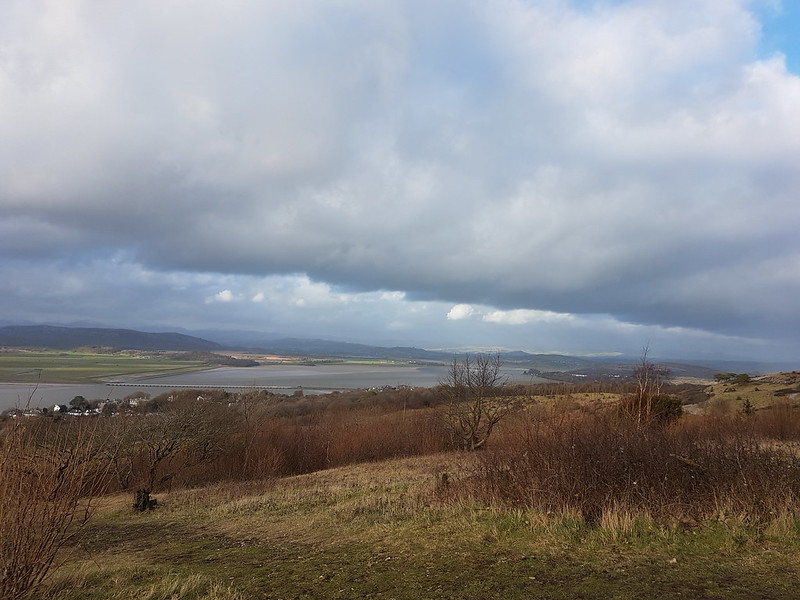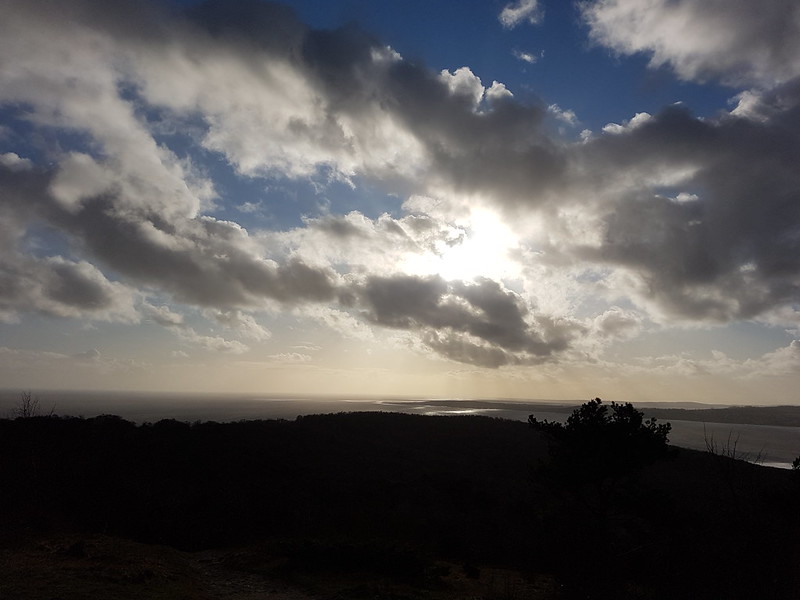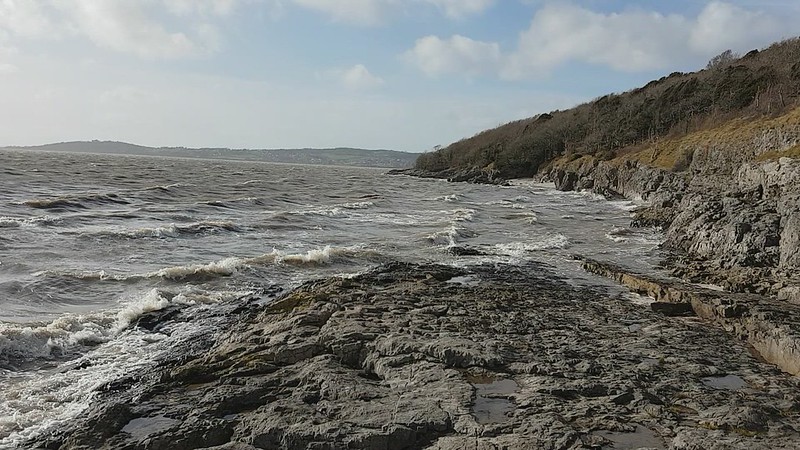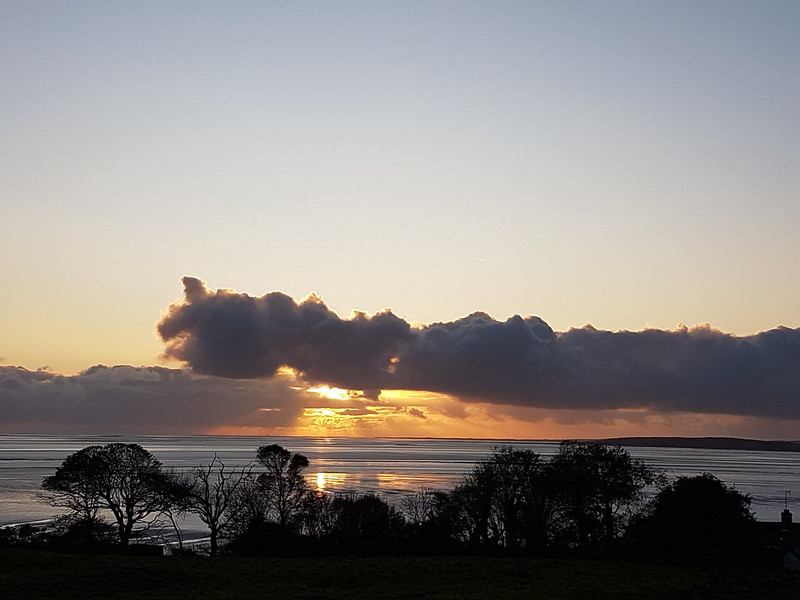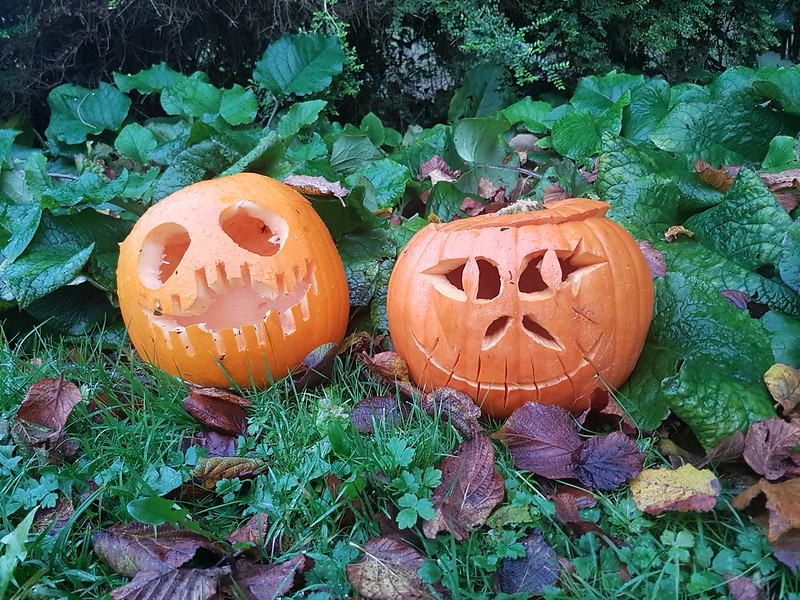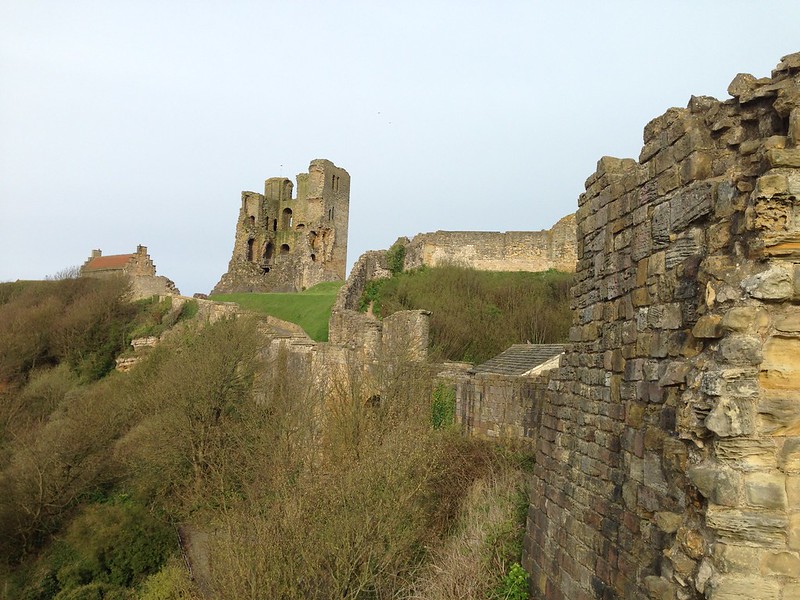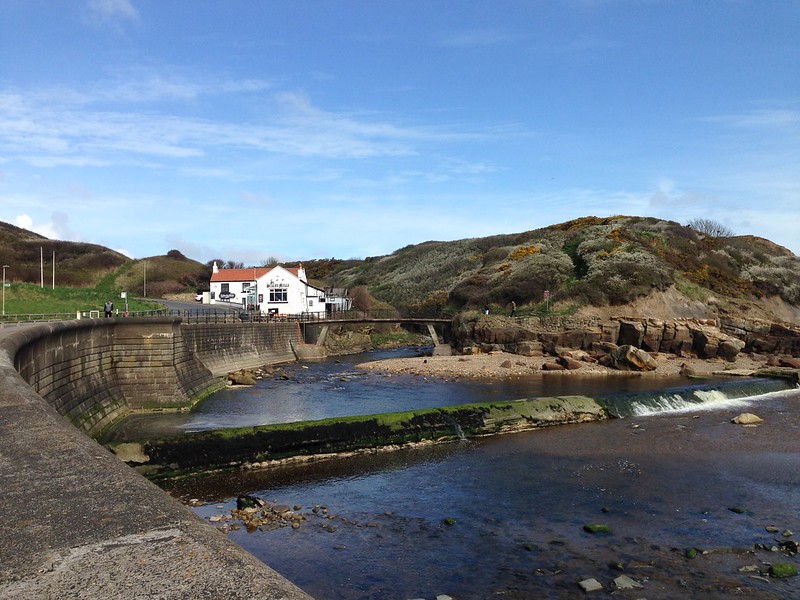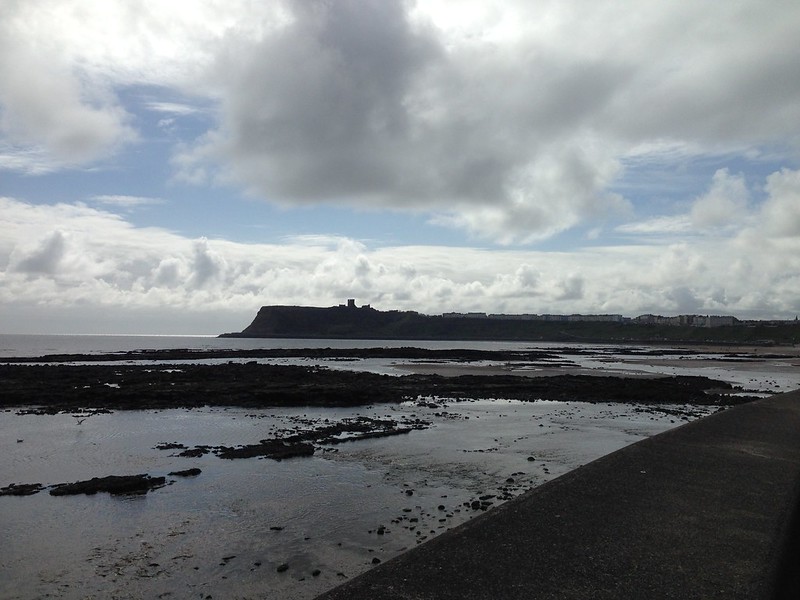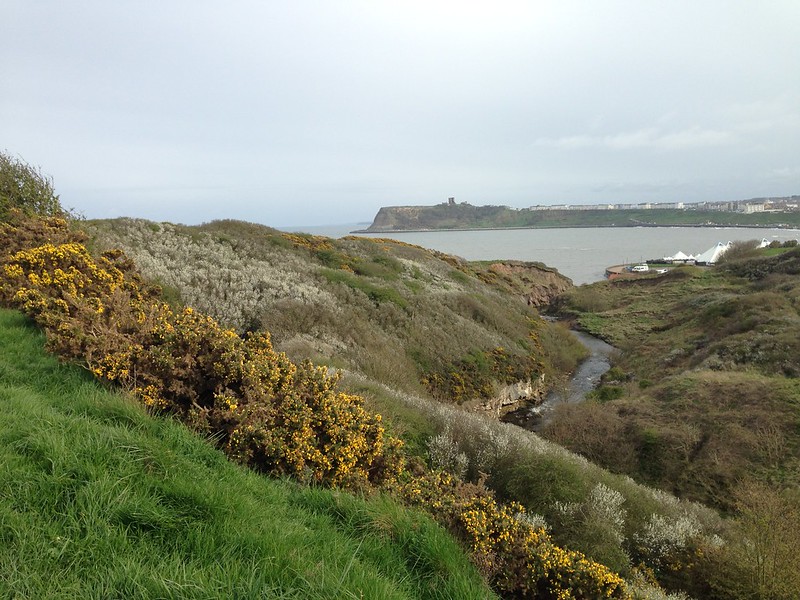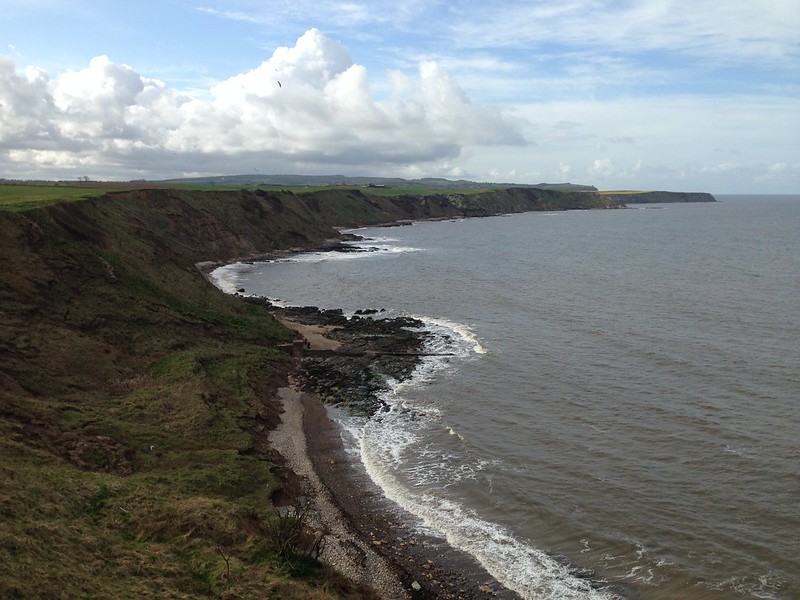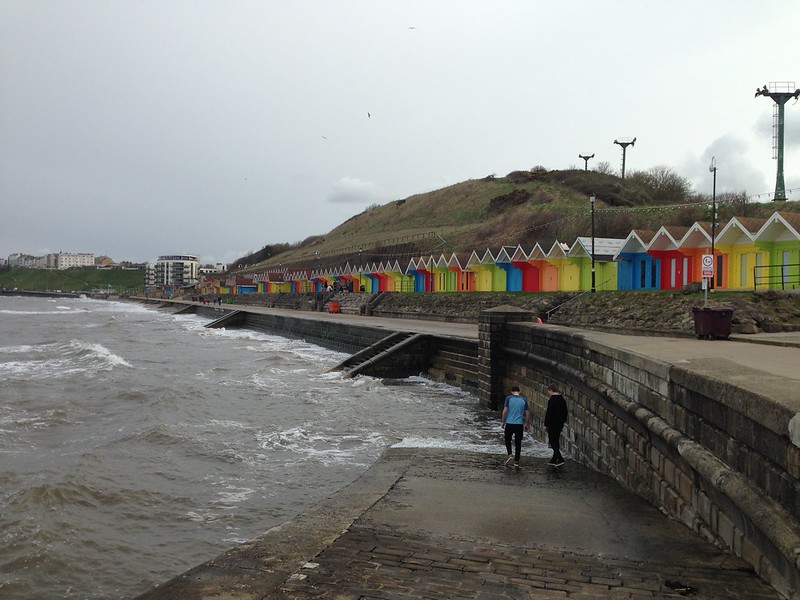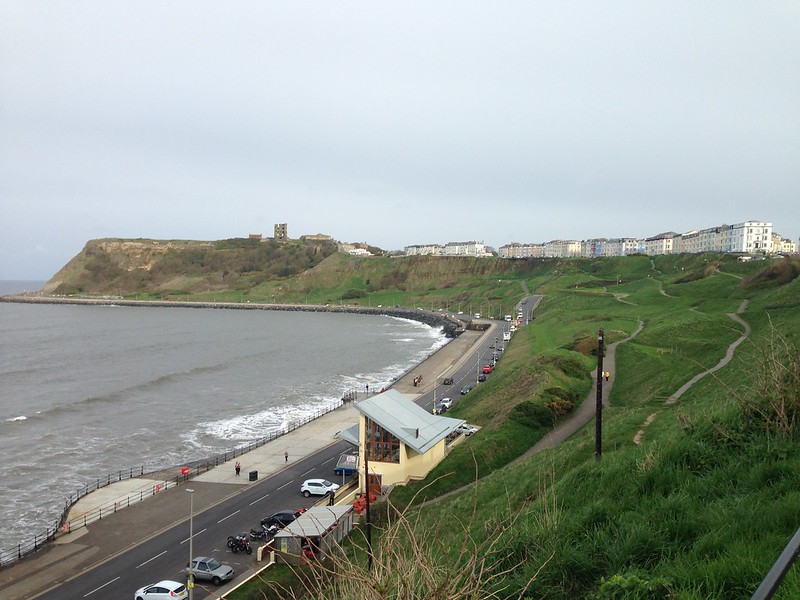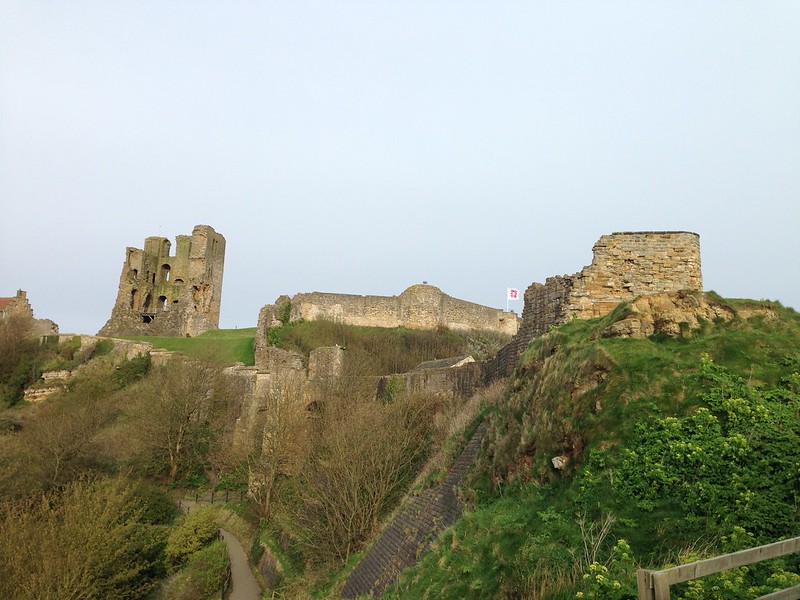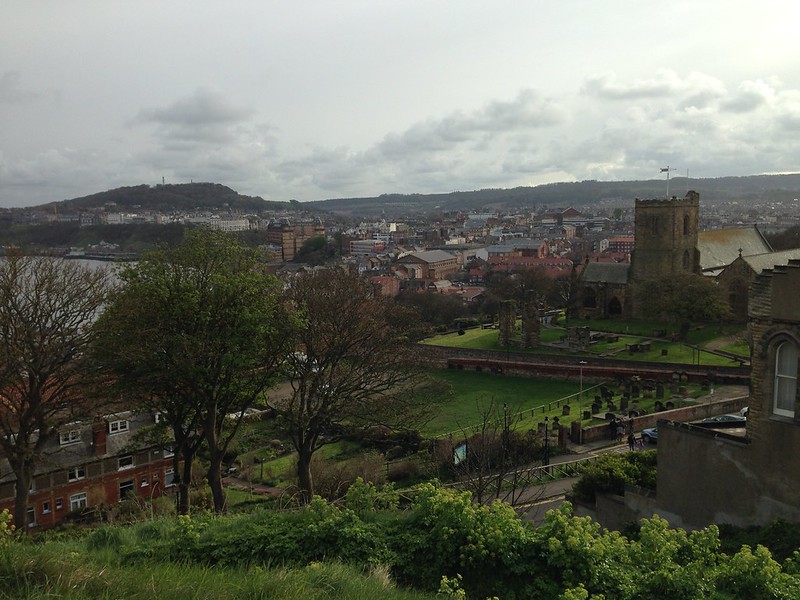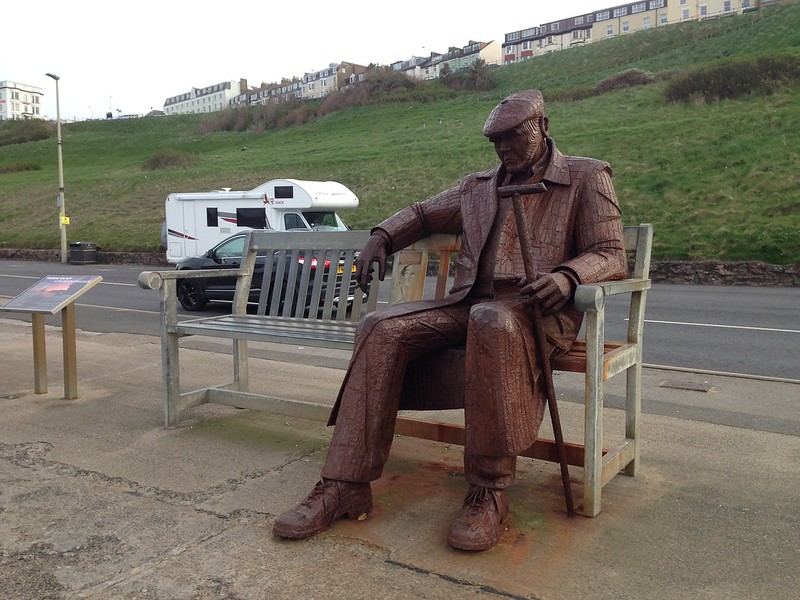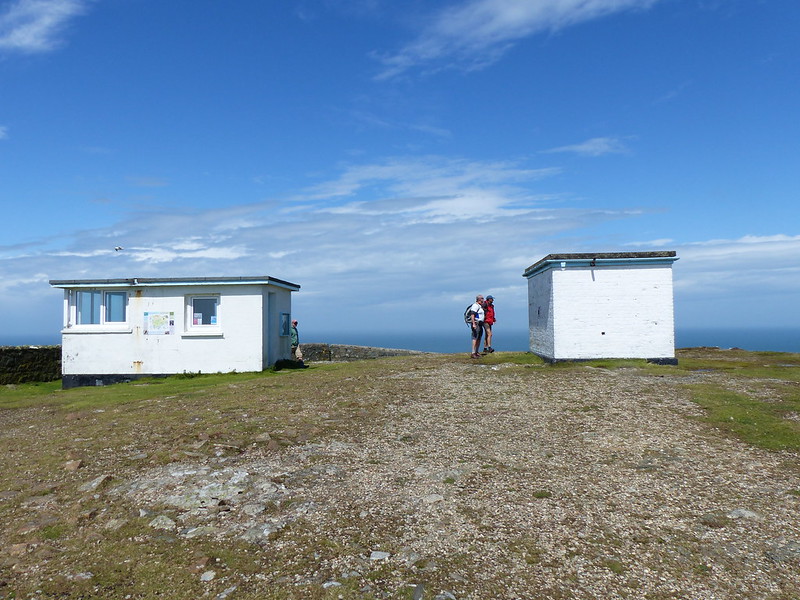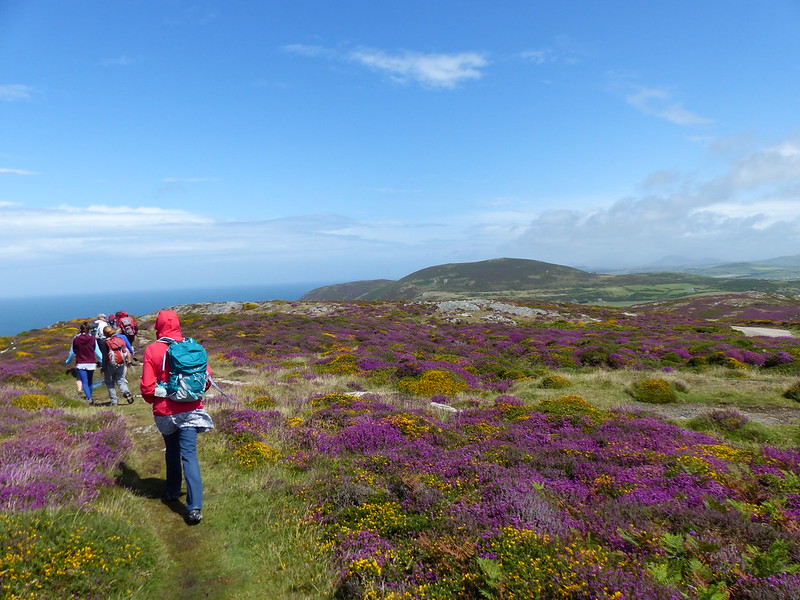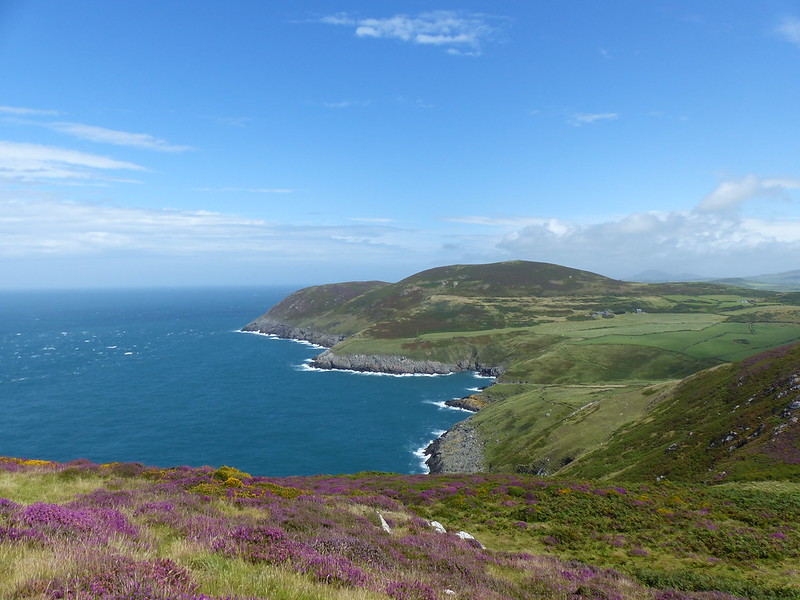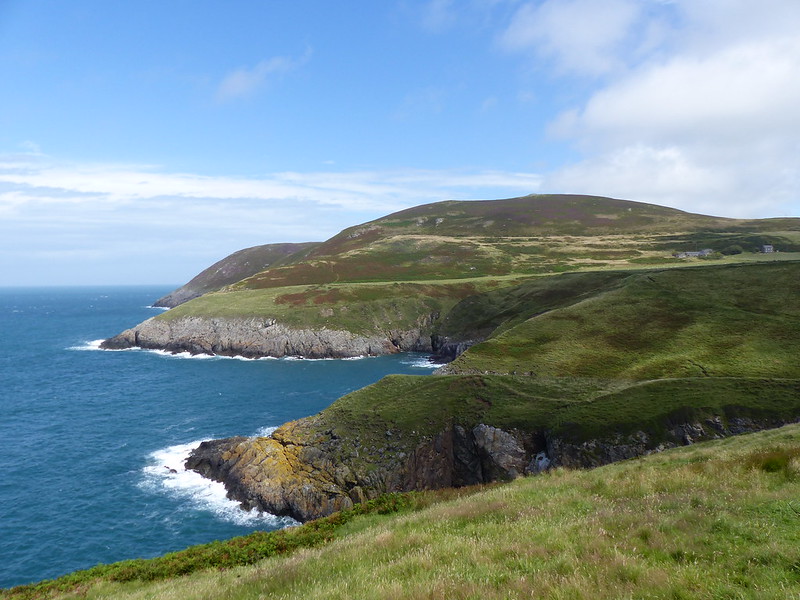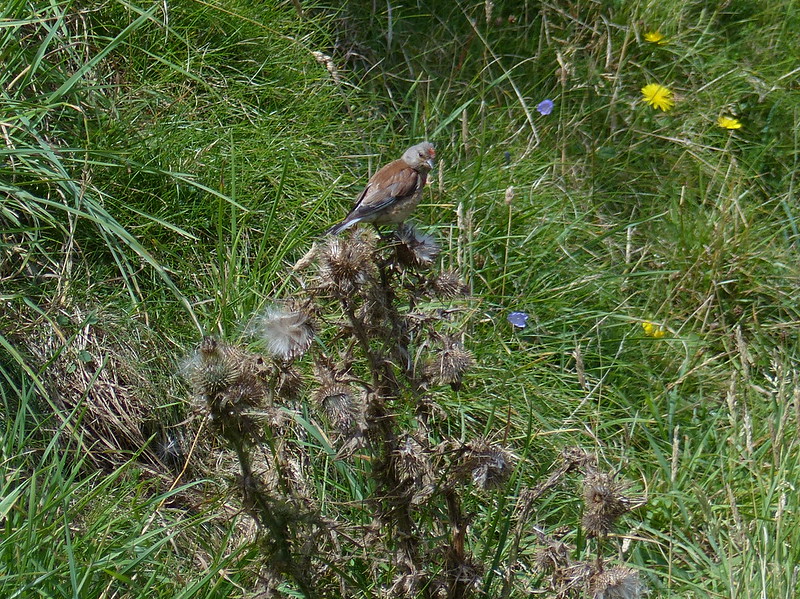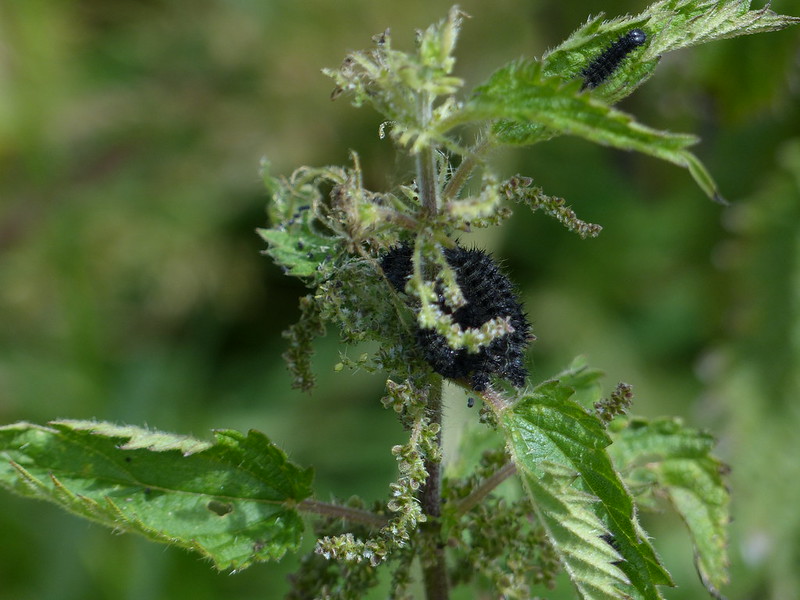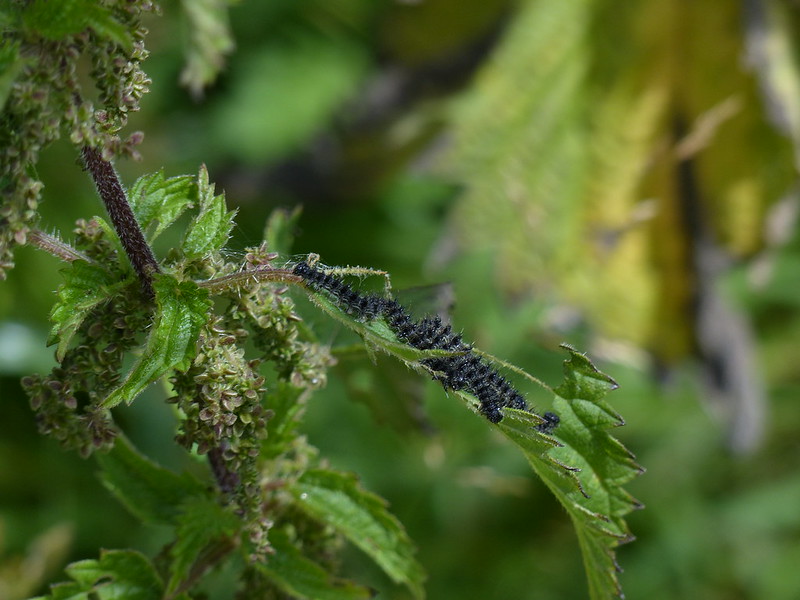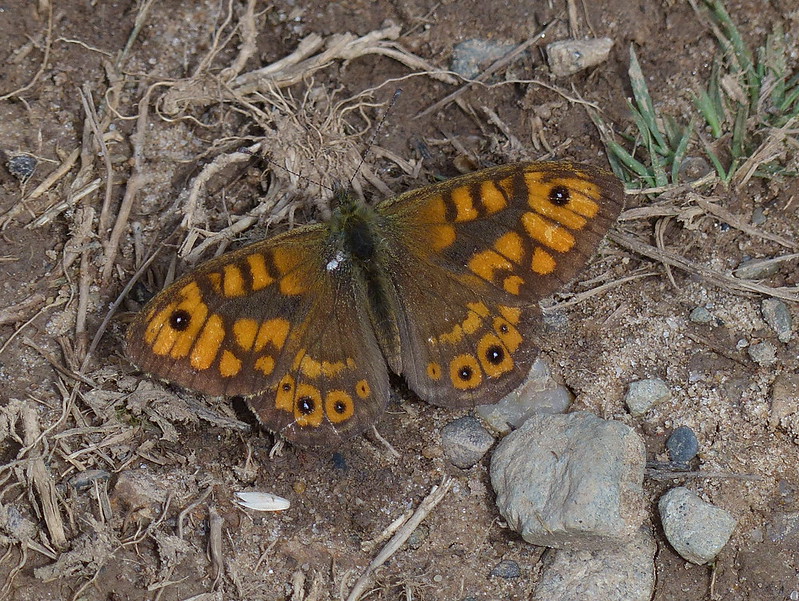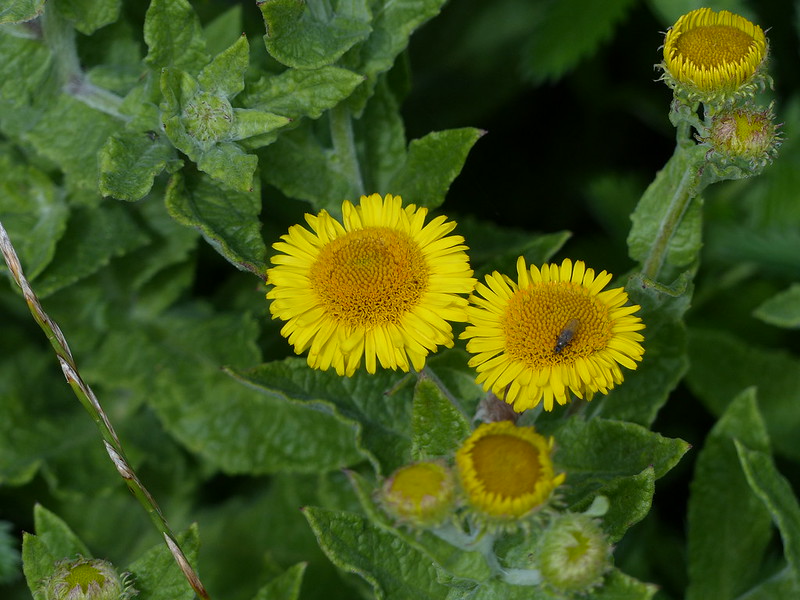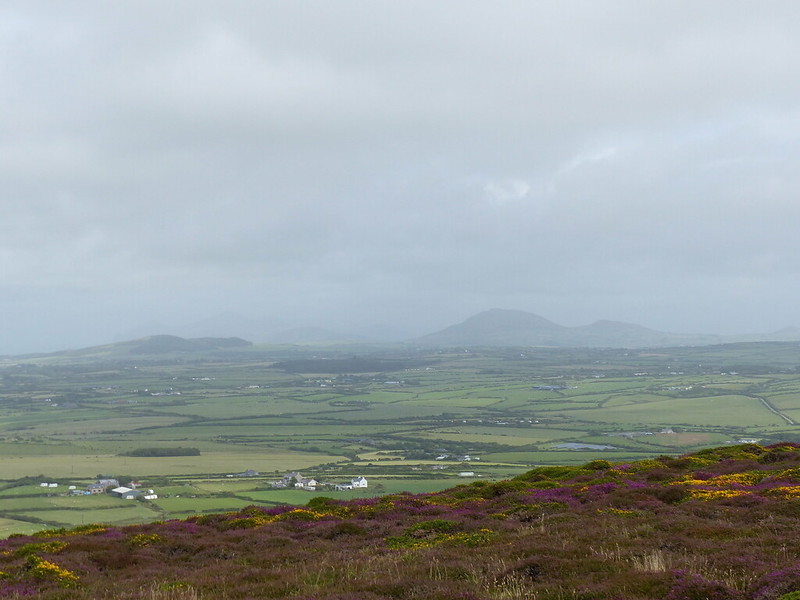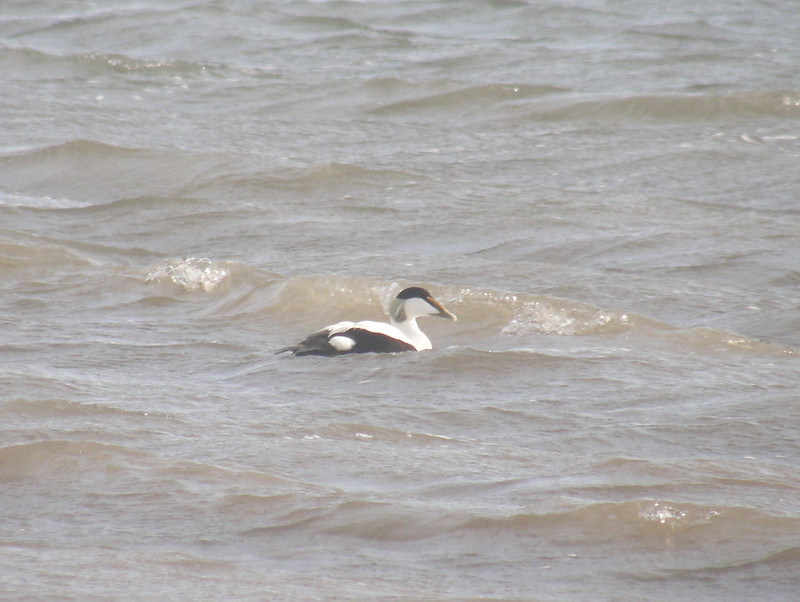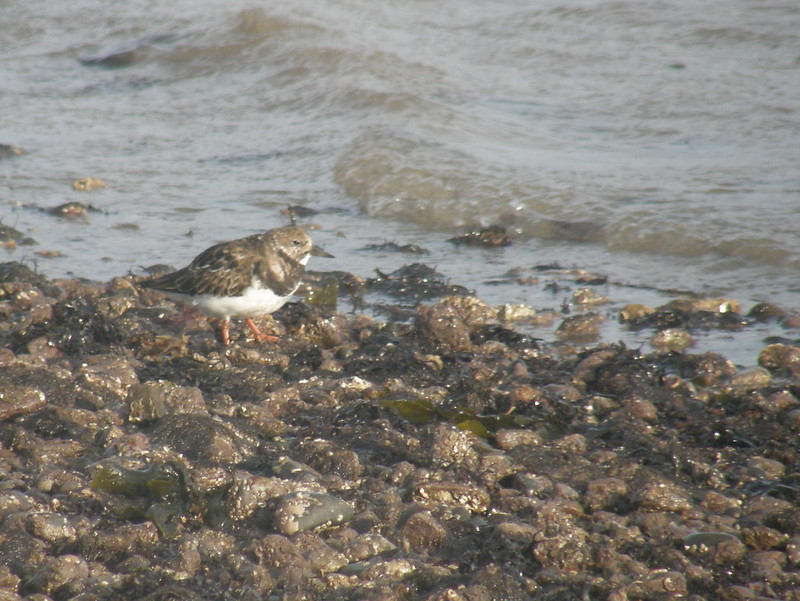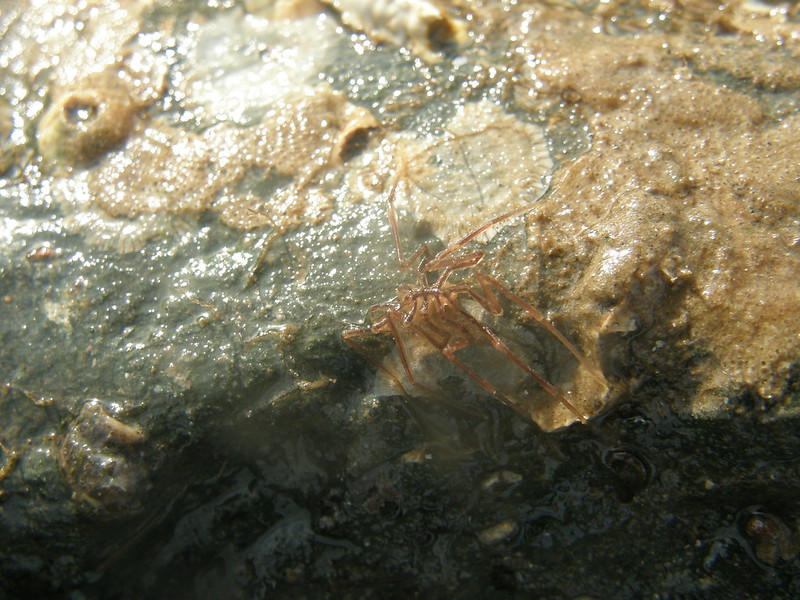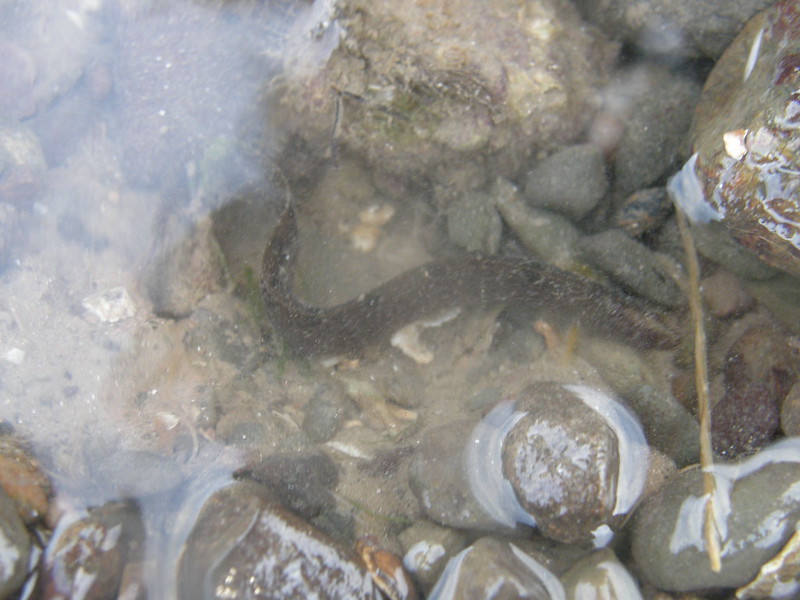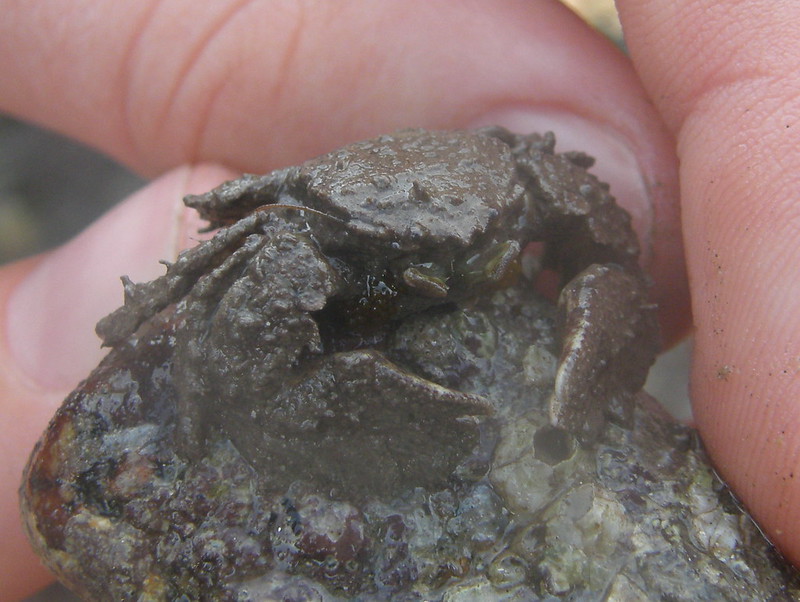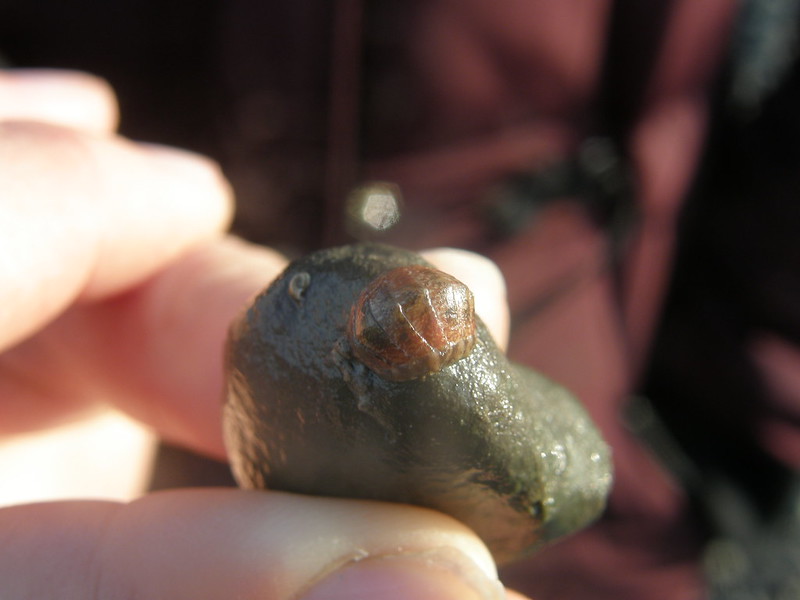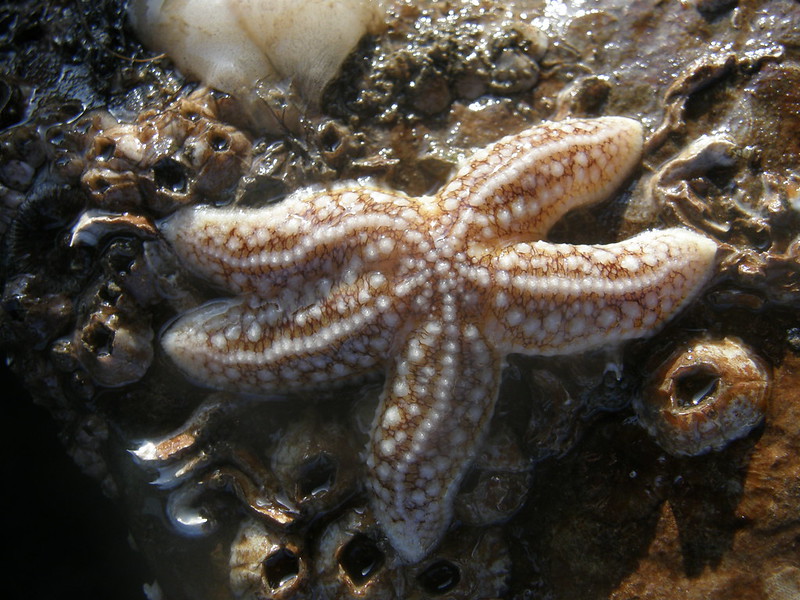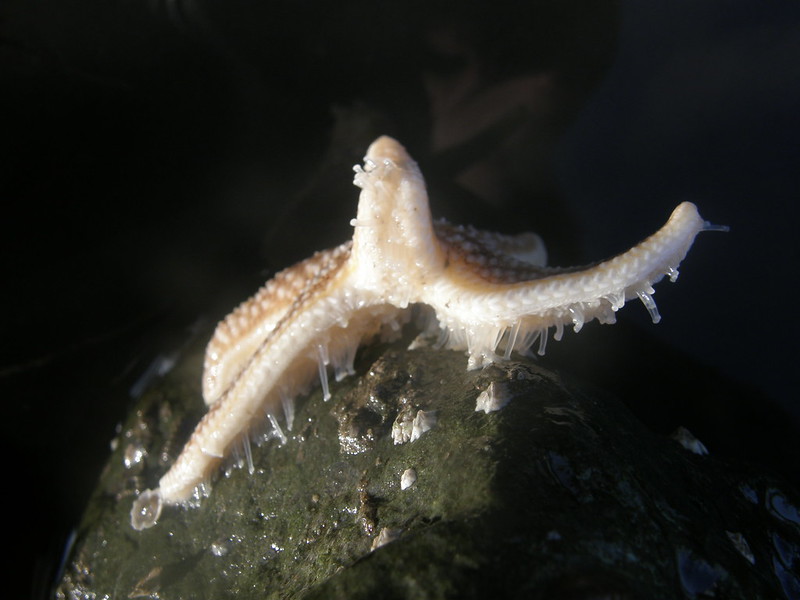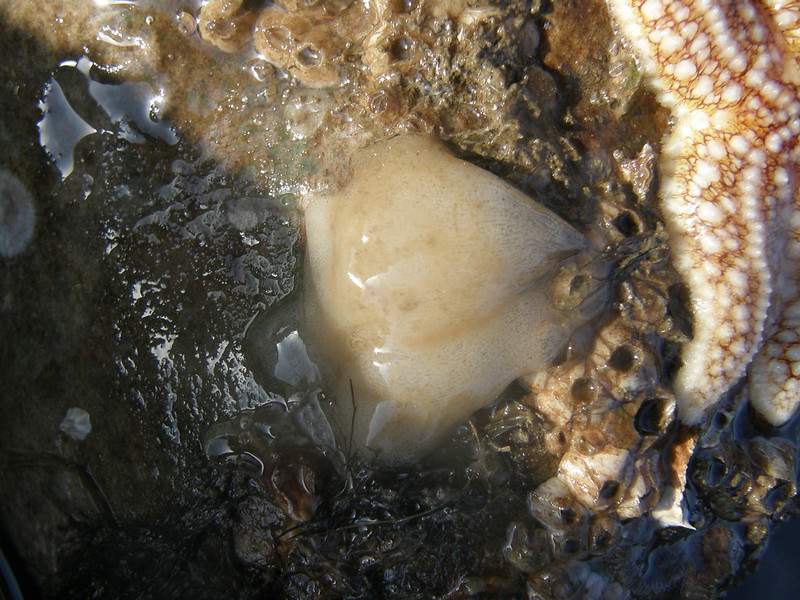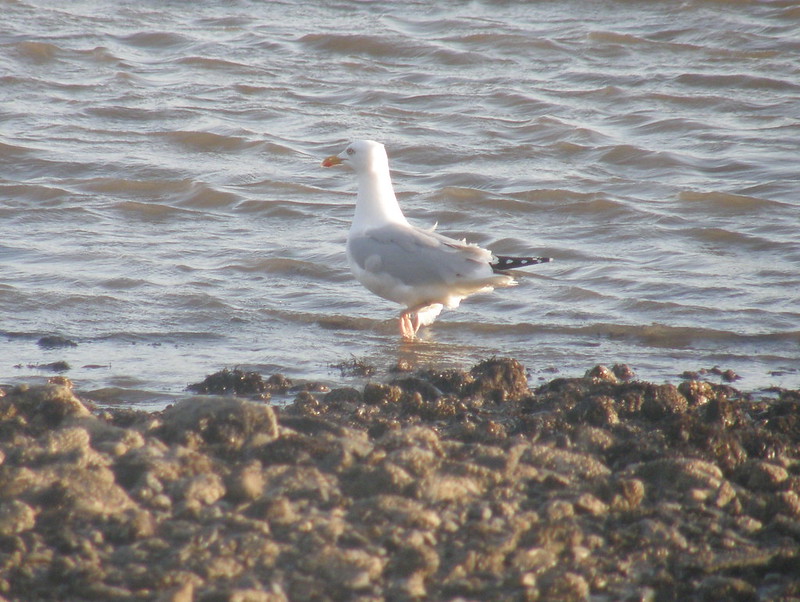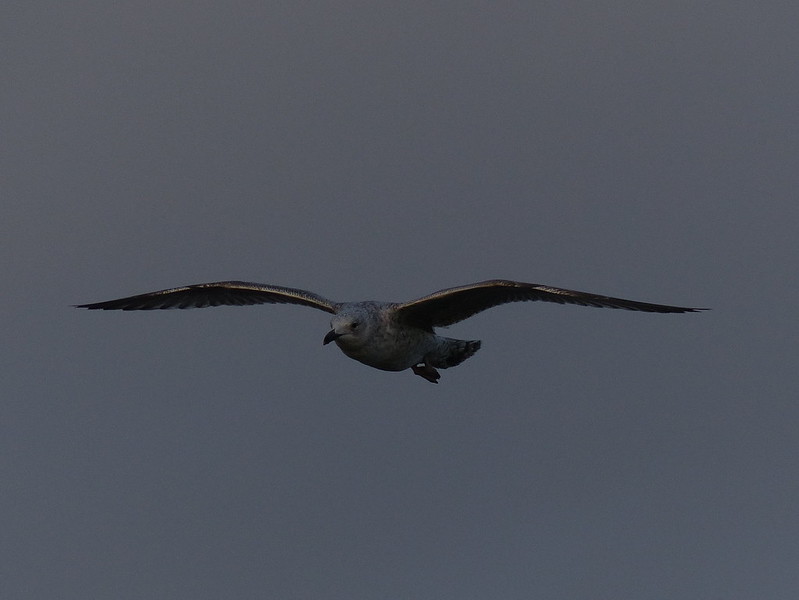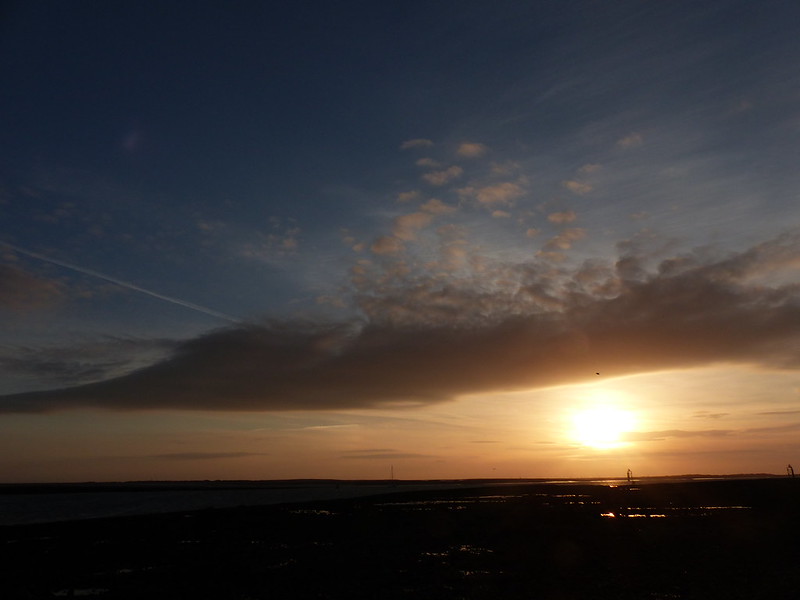
Our second day’s walking started at the south-west corner of the island overlooking ‘the iconic’ La Corbiere lighthouse. And right beside this radio tower…

…a remnant of the wartime occupation and another of the buildings available as a holiday let from Jersey Heritage. In fact, we later met a man who was staying there with his family – I gather that the view from the top – come rain, shine, fog or storm, is stunning. From this vantage there’s a good view of Guernsey, Sark and Herm, but not Alderney which is much further north.
We saw….

….wheatears regularly on our walk. I associate them with hill country, but they like beaches and coastal heath too.

Hottentot fig is a very invasive introduced species, from South Africa like the Jersey lily, which has colonised large areas of the coastal cliffs and hillsides.

I believe that, understandably, attempts have been made to remove it.

It does look very cheery though.
At the start of our walk, we had seen the catamaran leaving St. Peter Port on Guernsey heading this way. As we descended to this stony cove….

…we first heard (almost felt) and then saw it pass…

We’d come this way to investigate this cave, …

…which even Arthur had never explored before.

Another Kestrel.

Throughout our walks we saw quite a number of butterflies – the previous morning it had been mostly speckled woods. This morning I wasn’t sure what we were seeing – they would flutter past and then apparently disappear. You can perhaps see why! I think this master of disguise is a grayling. (But as ever I stand ready to be corrected.)

A little like I had in France in the preceding weeks, I felt slightly lost looking at exotic flowers, which as far as I know don’t occur on my home stretch of the Lancashire coast, and wondering whether they were native species or garden escapees.

I think that this might be purple viper’s-bugloss, but as you might gather, I’m not remotely confident about that.
We had climbed away from the sea a little to look at the reservoir for Jersey’s desalination plant – an old quarry full of green seawater, and also the building which had housed the winding gear for the quarry. There were many butterflies here: more graylings (I think), a gatekeeper, and this….

..beauty, which I assumed must be a fritillary, but they don’t have eyes. it’s a female wall brown.

A view back along the coast – the squat ‘tower’ in the centre is the pump-house for the desalination plant.

We saw many cormorants on both days – usually at some distance. This is not a great shot, but it gives me a chance to sneak in this description of cormorants…
…stood in groups upon the passing rocks like members of the clergy who have agreed, with bad grace, to differ.
…from Mr Pye by Mervyn Peake, which is set on Sark, the closest thing to Channel Island literature I could find on my bookshelves, and which I had reread on the flight over.

Path side artwork.

We diverted slightly from the conventional route to take a look at this blowhole, which Arthur had heard is full of old cars – although we couldn’t get close enough to see whether that is true or not.

More path side art.

During our stay I didn’t swim in the sea at any point, although unbeknownst to Alan and Arthur, ever hopeful I carried Bermuda trunks and a towel in my rucksack the whole time. Isn’t that the advantage of coastal paths? Walk a bit, swim a bit? When I come back, I intend to swim at this beach, Le Beau Port – it’s the view above all others which will stick in my mind. Look at it. Don’t you want to dive in right now? (With a wintery storm raging outside I’d definitely swap here for there!)

But for now I’ll have to make do with another view of a tres beau port. (Notice once again – almost empty!)

A large clump of these cheery pink blooms graced the foot of a signpost nearby. It’s another plant I wasn’t familiar with. Trying to identify it, I got quite excited when I realised that Jersey has its very own pink, but the excitement was short-lived: this is not it. It was the leaves which gave the crucial clue…

“They look a bit like wood-sorrel leaves,” I thought. So I looked up wood-sorrel, and there on the same page was pink-sorrel, another introduced species, this time from South America.
This is St. Brelade’s Church….

…on the right, just out of shot, is…

…which has 14th Century wall paintings which somehow survived the ravages of the reformation, and were rediscovered in 1918.

The chapel.

The annunciation.

King Herod.
From there it was a short stroll across St. Brelade’s beach to our lunch stop at ‘The Crab Shack’. Sadly Earl, Randy, Joy and Darnell were nowhere to be seen, but the plaice was every bit as good as I was coming to expect and Alan tucked into the biggest seafood platter I’ve ever seen.
But – that was the nature of our Jersey trip – walk a bit, eat a lot, walk a bit more, eat a lot more.

Black-backed gull. (Greater – perhaps)

Herring gull.
